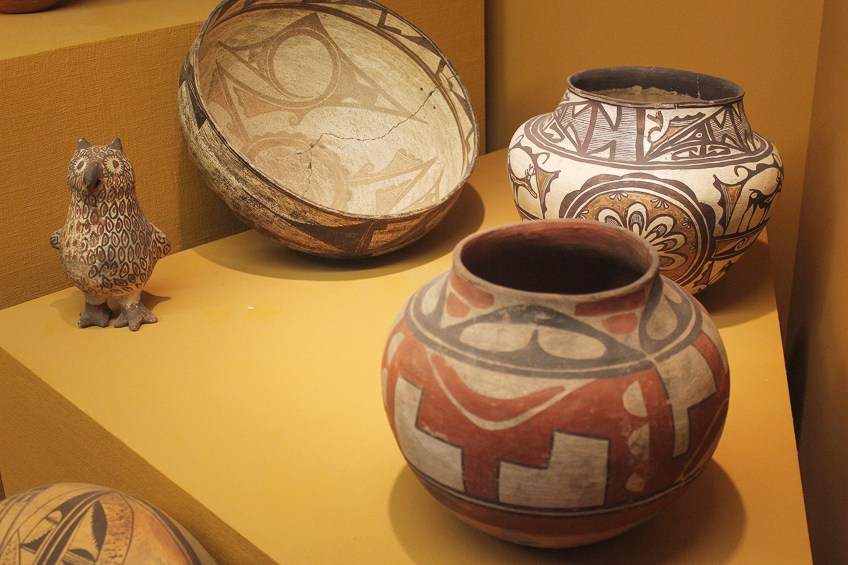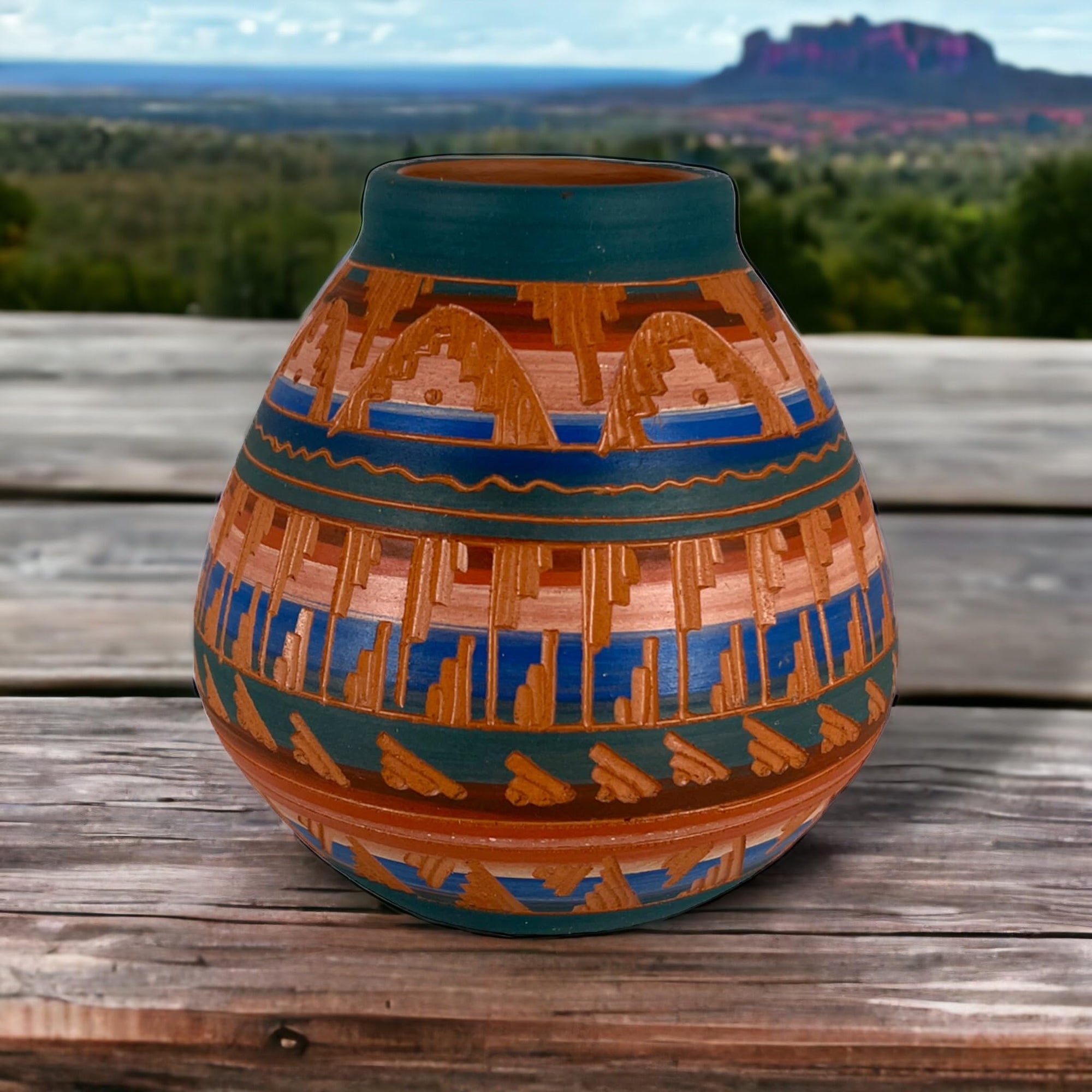
The Enduring Tapestry: Native American Artistry in Glass and Shell
Native American art forms are a profound testament to human ingenuity, spiritual depth, and an unbreakable connection to the land. Among the myriad expressions of this rich cultural heritage, the intricate use of glass and shell stands out as a vibrant, evolving tradition. Far from mere adornment, these materials have been woven into the fabric of identity, spirituality, diplomacy, and historical record, transforming from natural elements and trade goods into masterpieces of cultural resilience and artistic innovation.
Before the shimmering allure of European glass beads captivated indigenous artisans, shell held immense significance across the North American continent. Shells, particularly those from marine environments like the Atlantic and Pacific coasts, were prized for their natural beauty, durability, and scarcity in inland regions. They were not merely decorative; they were imbued with profound spiritual and ceremonial meaning, serving as indicators of status, wealth, and spiritual power.
In the Northeast, the Haudenosaunee (Iroquois) and coastal Algonququian nations like the Wampanoag and Narragansett, developed the highly sophisticated art of wampum. Crafted from the purple and white shells of the quahog clam and whelk, wampum beads were painstakingly cut, ground, and polished into cylindrical forms, then strung or woven into belts. These belts were not currency in the European sense, but rather mnemonic devices and diplomatic instruments. Each pattern and color arrangement carried specific meanings, recording treaties, historical events, and sacred narratives. They were the physical embodiment of agreements, promises, and the collective memory of a people. "Wampum belts were like living documents," explains a historical text on Haudenosaunee culture, "each bead a word, each line a sentence, preserving the integrity of their history and diplomacy."
Further south and along the Pacific coast, abalone, conch, and other marine shells were carved into pendants, ear ornaments, and effigies. The iridescent sheen of abalone, with its shifting spectrum of blues, greens, and purples, was particularly revered, often incorporated into ceremonial regalia and masks to symbolize light, water, and spiritual protection. The meticulous skill required to shape and polish these brittle materials without the aid of modern tools speaks volumes about the mastery of pre-contact artisans.
The arrival of European traders in the 16th century marked a pivotal shift in Native American artistry, introducing a new material that would revolutionize indigenous aesthetics: glass beads. These small, often brightly colored, manufactured beads quickly became highly sought-after trade goods. While some might view this as an imposition of foreign materials, Native American artists did not merely adopt glass beads; they appropriated and transformed them, integrating them into existing artistic traditions and developing entirely new ones.

Prior to glass beads, quillwork was the dominant form of surface embellishment across much of North America, particularly among Plains and Great Lakes tribes. Porcupine quills, dyed with natural pigments, were flattened, folded, and sewn onto buckskin or birchbark to create intricate geometric and pictorial designs. The painstaking process of preparing and applying quills instilled a deep appreciation for detail and pattern that seamlessly transitioned to beadwork. Glass beads, with their vibrant colors, uniform size, and relative ease of application compared to quills, offered an expanded palette and new possibilities for expression.
The impact of glass beads was immediate and profound. They were seen not just as commodities, but as powerful objects – sometimes called "Manido-min-es" or "spirit berries" by the Ojibwe – capable of capturing light and reflecting the spiritual world. The introduction of these beads spurred an explosion of creativity, leading to the development of distinct regional styles and techniques that continue to thrive today.
One of the most recognizable forms of beadwork is the "lazy stitch" or "lane stitch," prevalent among the Plains tribes such as the Lakota, Cheyenne, and Crow. This technique involves stringing a small number of beads (typically 5-7) onto a thread, laying them flat against the surface of the hide, and then stitching them down. Rows of these beaded "lanes" are then laid side-by-side, creating a rich, textured surface with distinctive ridging. This method lent itself beautifully to the bold, geometric designs characteristic of Plains art, often adorning moccasins, pipe bags, dresses, and horse regalia. These designs frequently incorporated symbolic motifs representing natural phenomena, tribal history, or personal visions, communicating identity and status within the community.
In contrast, the Great Lakes and Northeastern tribes often favored the "overlay stitch" or "spot stitch," which allowed for more curvilinear, floral, and naturalistic designs. Here, each bead is individually sewn down or a few beads are strung and then tacked, creating a smooth, almost painterly surface. This technique enabled the depiction of intricate botanical patterns, often inspired by the lush forest environments of the region, adorning bandolier bags, moccasins, and clothing with breathtaking detail. The Anishinaabe (Ojibwe), Potawatomi, and Ho-Chunk nations are renowned for their masterful floral beadwork, which continues to be a hallmark of their artistic expression.
Beyond these major techniques, other methods like loom beading, which creates flat, woven strips ideal for belts and headbands, and the tubular "peyote stitch," often used for ceremonial items like rattles and staffs, further demonstrate the versatility and adaptability of beadwork. Each technique, developed over generations, allowed artists to manipulate glass beads to achieve specific aesthetic and symbolic effects.
The integration of glass beads and shells also created stunning hybrid art forms. In the Southwest, for instance, shell was often combined with turquoise, jet, and coral in intricate inlay and mosaic work, particularly by the Navajo, Zuni, and Pueblo peoples. Here, cut and polished pieces of shell are precisely fitted into a matrix, often silver, to create dazzling patterns and pictorial representations. The luminous quality of mother-of-pearl or abalone shell, juxtaposed with the deep blues of turquoise or the stark black of jet, created a powerful visual language that conveyed spiritual beliefs and cultural narratives. Necklaces of heishi beads—tiny, disc-shaped shells often combined with turquoise—exemplify the enduring importance of shell in Southwestern jewelry.
The symbolism embedded within these glass and shell creations is profound. Colors were not chosen arbitrarily; they carried specific meanings. White might represent purity or the spirit world, blue the sky or water, red lifeblood or war, and yellow the sun or prosperity. Patterns, whether geometric or organic, were often abstract representations of animals, natural landscapes, celestial bodies, or spiritual beings. The meticulous labor involved in creating these pieces—often hundreds of hours for a single item—itself carried spiritual significance, a meditative act of creation that honored the materials and the traditions they embodied.
Today, Native American artistry in glass and shell continues to evolve. Contemporary artists are exploring new techniques, incorporating modern materials, and pushing the boundaries of traditional forms while remaining deeply rooted in their cultural heritage. This modern renaissance is crucial for cultural preservation, economic empowerment, and challenging prevailing stereotypes. Artists like Jamie Okuma (Luiseño/Shoshone-Bannock) create breathtaking beaded couture, blending traditional techniques with high fashion, while others like Marcus Amerman (Choctaw) use beadwork to create narrative portraits that comment on contemporary Native life.
However, the art form faces challenges. The market for authentic Native American art is often diluted by mass-produced, inauthentic items. Cultural appropriation, where non-Native individuals or companies profit from indigenous designs without understanding or respecting their origins, remains a persistent issue. For artists, maintaining the integrity of their cultural expressions while navigating commercial pressures requires constant vigilance and education.

Despite these hurdles, the future of Native American glass and shell art remains bright, sustained by dedicated artisans who carry forward the knowledge of their ancestors. Workshops and mentorship programs ensure that traditional techniques are passed down to new generations, fostering a vibrant continuum of creativity. As one contemporary artist, Sarah Whitefeather (Anishinaabe), eloquently states, "Each bead I sew, each shell I polish, is a conversation with my ancestors. It’s not just art; it’s a prayer, a story, a continuation of who we are."
From the ancient wampum belts that recorded history to the glittering beadwork that adorns contemporary regalia, and the luminous shell inlays that speak of the earth’s bounty, the intricate art forms utilizing glass and shell are more than just beautiful objects. They are living testaments to the enduring spirit of Native American cultures—a testament to adaptability, innovation, and an unwavering commitment to cultural expression that continues to shine with the brilliance of a thousand tiny beads and the timeless glow of the ocean’s gifts.